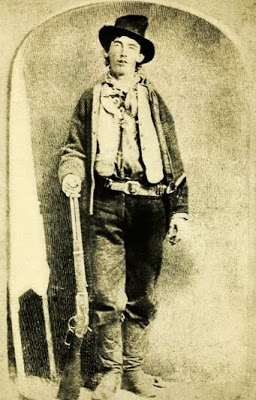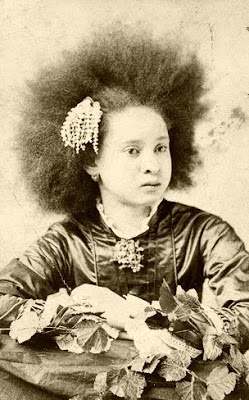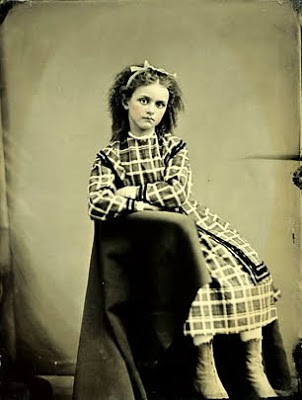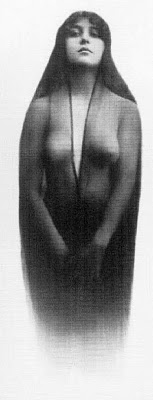Philosophy

What is believed to be the only surviving authenticated portrait of Billy the Kid went up for auction in Denver on Saturday and sold for $2.3 million.
The tintype on Saturday evening went to private collector William Koch at Brian Lebel's 22nd Annual Old West Show & Auction, where auction spokeswoman Melissa McCracken said the image of the 1800s outlaw was the most expensive piece ever sold at the event.
A 15% fee was added to the bidding price, making the selling price more than $2.6 million. Organizers had expected it could fetch between $300,000 and $400,000.
The tintype is believed to have been taken in 1879 or 1880 in Fort Sumner, N.M. It shows the outlaw dressed in a rumpled hat and layers of clothes, including a bulky sweater. He's standing with one hand resting on a Winchester carbine on his right side and a Colt revolver holstered on his left side.
Tintypes were an early form of photography that used metal plates. They are reverse images, and the Billy the Kid tintype led to the mistaken belief that Billy the Kid was a lefty. The myth inspired the 1958 movie "The Left Handed Gun", starring Paul Newman as Billy.
Billy the Kid gave the image to a friend, Dan Dedrick, and the tintype has been owned by his descendants, the Upham family, ever since. It has only been publicly displayed during the 1980s at a museum in Lincoln County, N.M.
McCracken said it's recognizable around the world as a classic image of the Old West.
"There's only one photo of Billy the Kid, and I think that's why it captivates people's imagination," she said before Saturday's auction.
The tintype was auctioned off along with more than 400 other Western-themed items, including documents from Buffalo Bill's aborted divorce, Native American antiquities, and a painting from Andy Warhol's "Cowboys and Indians" series depicting a Navajo woman with a baby on her back.
Recently...
No pardon for Billy the Kid; Annie Lennox honored by Queen Elizabeth II; Cee Lo and Gwyneth Paltrow may work together…
No Pardon for Billy the Kid: New Mexico Governor Bill Richardson has announced that he won’t grant a pardon to Wild West outlaw Billy the Kid. Billy the Kid, born Henry McCarty, was killed at the age of 21 by Sheriff Pat Garrett 129 years ago. Some Billy the Kid historians say that territorial Gov. Lew Wallace had promised to give the outlaw a pardon about 130 years ago, and that the pledge should be honored regardless of his other crimes. Some members of the Garrett family oppose a pardon. Richardson, who is leaving office, made his announcement on “Good Morning America.” “I’ve decided not to pardon Billy the Kid because of a lack of conclusiveness and the historical ambiguity as to why Governor Wallace reneged on his pardon,” Richardson said. He said it was a “very close call” and he had been working on the case for eight years. “The romanticism appealed to me to issue a pardon, but the facts and the evidence did not support it and I’ve got to be responsible especially when a governor is issuing pardons,” Richardson said.


- Andy Warhol Foundation Will Sell Collection
"Andy Warhol foundation to sell collection of artist's works" Series of auctions, private sales and online events will include items never before seen by the public September 6th, 2012 guardian.co.uk The Andy Warhol Foundation for the Visual Arts...
- We Are Getting Older
Billy Collins [William James Collins]...Poet Laureate of the United States from 2001 to 2003. Face it, it will happen to all of us. Forgetfulness Forgetfulness The name of the author is the first to go followed obediently by the title, the plot, the...
- David Henderson Houston...patent Number 248,179...october 11th, 1881
A significant patent was granted to David Houston on this day 129 years ago--photographic roll film. Online Artist Archive of North Dakota by Ben Nemenoff Although not a photographer himself and virtually unknown today, David Houston made some of the...
- Bobbie Gentry Turns 66 Today
Bobbie Gentry July 27th, 1944 A laid back tale from the South. Sort of a one hit wonder but still a thoughtful tune. Ode to Billie Joe 1967 Ode to Billie Joe It was the third of June, another sleepy, dusty Delta day I was out choppin' cotton and...
- Repair Your Scratch?...billy Mays Can--not
Vince Offer and Billy Mays We have all seen them from 60 second commercials to infomercials--the carny barkers, charlatans, hucksters, snake oil merchants. They always have some revolutionary product that we must have. Two of the biggies are Billy Mays...
Philosophy
"Billy the Kid" tintype and tintypes

"Billy the Kid photo auctioned for $2.3 million"
Private collector William Koch buys the only known tintype of the Old West outlaw. It is believed to have been made in New Mexico around 1880.
June 26th, 2011
Associated Press
Private collector William Koch buys the only known tintype of the Old West outlaw. It is believed to have been made in New Mexico around 1880.
June 26th, 2011
Associated Press
What is believed to be the only surviving authenticated portrait of Billy the Kid went up for auction in Denver on Saturday and sold for $2.3 million.
The tintype on Saturday evening went to private collector William Koch at Brian Lebel's 22nd Annual Old West Show & Auction, where auction spokeswoman Melissa McCracken said the image of the 1800s outlaw was the most expensive piece ever sold at the event.
A 15% fee was added to the bidding price, making the selling price more than $2.6 million. Organizers had expected it could fetch between $300,000 and $400,000.
The tintype is believed to have been taken in 1879 or 1880 in Fort Sumner, N.M. It shows the outlaw dressed in a rumpled hat and layers of clothes, including a bulky sweater. He's standing with one hand resting on a Winchester carbine on his right side and a Colt revolver holstered on his left side.
Tintypes were an early form of photography that used metal plates. They are reverse images, and the Billy the Kid tintype led to the mistaken belief that Billy the Kid was a lefty. The myth inspired the 1958 movie "The Left Handed Gun", starring Paul Newman as Billy.
Billy the Kid gave the image to a friend, Dan Dedrick, and the tintype has been owned by his descendants, the Upham family, ever since. It has only been publicly displayed during the 1980s at a museum in Lincoln County, N.M.
McCracken said it's recognizable around the world as a classic image of the Old West.
"There's only one photo of Billy the Kid, and I think that's why it captivates people's imagination," she said before Saturday's auction.
The tintype was auctioned off along with more than 400 other Western-themed items, including documents from Buffalo Bill's aborted divorce, Native American antiquities, and a painting from Andy Warhol's "Cowboys and Indians" series depicting a Navajo woman with a baby on her back.
Recently...
"Billy the Kid Denied Pardon"
No pardon for Billy the Kid; Annie Lennox honored by Queen Elizabeth II; Cee Lo and Gwyneth Paltrow may work together…
No Pardon for Billy the Kid: New Mexico Governor Bill Richardson has announced that he won’t grant a pardon to Wild West outlaw Billy the Kid. Billy the Kid, born Henry McCarty, was killed at the age of 21 by Sheriff Pat Garrett 129 years ago. Some Billy the Kid historians say that territorial Gov. Lew Wallace had promised to give the outlaw a pardon about 130 years ago, and that the pledge should be honored regardless of his other crimes. Some members of the Garrett family oppose a pardon. Richardson, who is leaving office, made his announcement on “Good Morning America.” “I’ve decided not to pardon Billy the Kid because of a lack of conclusiveness and the historical ambiguity as to why Governor Wallace reneged on his pardon,” Richardson said. He said it was a “very close call” and he had been working on the case for eight years. “The romanticism appealed to me to issue a pardon, but the facts and the evidence did not support it and I’ve got to be responsible especially when a governor is issuing pardons,” Richardson said.


On tintypes Robert Leggat in 1999 wrote...
The tintype, also known as a ferrotype, is a variation on this, but produced on metallic sheet (not, actually, tin) instead of glass. The plate was coated with collodion and sensitized just before use, as in the wet plate process. It was introduced by Adolphe Alexandre Martin in 1853, and became instantly popular, particularly in the United States, though it was also widely used by street photographers in Great Britain.
That this process appealed to street photographers was not surprising:
The process was simple enough to enable one to set up business without much capital.
It was much faster than other processes of the time: first, the base did not need drying, and secondly, no negative was needed, so it was a one-stage process.
Cheap to produce, a typical price for a tintype was 6d (2 1/2p) and 1 shilling (5p).
Being more robust than ambrotypes it could be carried about, sent in the post, or mounted in an album.
The material could easily be cut up and therefore fitted into lockets, brooches, etc.
The most common size was about the same as the carte-de-visite, 2 1/4'' x 3 1/2'', but both larger and smaller ferrotypes were made. The smallest were "Little Gem" tintypes, about the size of a postage-stamp, made simultaneously on a single plate in a camera with 12 or 16 lenses.
Compared with other processes the tintype tones seem uninteresting. They were often made by unskilled photographers, and their quality was very variable. They do have some significance, however, in that they made photography available to working classes, not just to the more well-to-do. Whereas up till then the taking of a portrait had been more of a special "event" from the introduction of tintypes, we see more relaxed, spontaneous poses.
Some tintypes that remain are somewhat poignant. The one shown here is of a child who has died. If this seems bizarre, it would seem to have been quite a practice in the last century.
In fact, the original name for Tintype was "Melainotype." It is perhaps worth adding that there was no tin in them. Some have suggested that the name after the tin shears used to separate the images from the whole plate, others that it was just a way of saying "cheap metal" (ie non-silver).
The print would come out laterally reversed (as one sees oneself in a mirror); either people did not worry about this, or just possibly they did not discover it until after the photographer had disappeared!
Being quite rugged, tintypes could be sent by post, and many astute tintypists did quite a trade in America during the Civil War, visiting the encampments. Later, some even had their shop on river-boats.
Tintypes were eventually superseded by gelatin emulsion dry plates in the 1880s, though street photographers in various parts of the world continued with this process until the 1950s; the writer well remembers being photographed by one of these street photographers in Argentina, when he was a boy. Eventually, of course, 35mm and Polaroid photography were to replace these entirely.
Tintype [Wikipedia]
And thinking of "old West" photos, is this Wyatt Earp's wife????

The tintype, also known as a ferrotype, is a variation on this, but produced on metallic sheet (not, actually, tin) instead of glass. The plate was coated with collodion and sensitized just before use, as in the wet plate process. It was introduced by Adolphe Alexandre Martin in 1853, and became instantly popular, particularly in the United States, though it was also widely used by street photographers in Great Britain.
That this process appealed to street photographers was not surprising:
The process was simple enough to enable one to set up business without much capital.
It was much faster than other processes of the time: first, the base did not need drying, and secondly, no negative was needed, so it was a one-stage process.
Cheap to produce, a typical price for a tintype was 6d (2 1/2p) and 1 shilling (5p).
Being more robust than ambrotypes it could be carried about, sent in the post, or mounted in an album.
The material could easily be cut up and therefore fitted into lockets, brooches, etc.
The most common size was about the same as the carte-de-visite, 2 1/4'' x 3 1/2'', but both larger and smaller ferrotypes were made. The smallest were "Little Gem" tintypes, about the size of a postage-stamp, made simultaneously on a single plate in a camera with 12 or 16 lenses.
Compared with other processes the tintype tones seem uninteresting. They were often made by unskilled photographers, and their quality was very variable. They do have some significance, however, in that they made photography available to working classes, not just to the more well-to-do. Whereas up till then the taking of a portrait had been more of a special "event" from the introduction of tintypes, we see more relaxed, spontaneous poses.
Some tintypes that remain are somewhat poignant. The one shown here is of a child who has died. If this seems bizarre, it would seem to have been quite a practice in the last century.
In fact, the original name for Tintype was "Melainotype." It is perhaps worth adding that there was no tin in them. Some have suggested that the name after the tin shears used to separate the images from the whole plate, others that it was just a way of saying "cheap metal" (ie non-silver).
The print would come out laterally reversed (as one sees oneself in a mirror); either people did not worry about this, or just possibly they did not discover it until after the photographer had disappeared!
Being quite rugged, tintypes could be sent by post, and many astute tintypists did quite a trade in America during the Civil War, visiting the encampments. Later, some even had their shop on river-boats.
Tintypes were eventually superseded by gelatin emulsion dry plates in the 1880s, though street photographers in various parts of the world continued with this process until the 1950s; the writer well remembers being photographed by one of these street photographers in Argentina, when he was a boy. Eventually, of course, 35mm and Polaroid photography were to replace these entirely.
Tintype [Wikipedia]
And thinking of "old West" photos, is this Wyatt Earp's wife????

- Andy Warhol Foundation Will Sell Collection
"Andy Warhol foundation to sell collection of artist's works" Series of auctions, private sales and online events will include items never before seen by the public September 6th, 2012 guardian.co.uk The Andy Warhol Foundation for the Visual Arts...
- We Are Getting Older
Billy Collins [William James Collins]...Poet Laureate of the United States from 2001 to 2003. Face it, it will happen to all of us. Forgetfulness Forgetfulness The name of the author is the first to go followed obediently by the title, the plot, the...
- David Henderson Houston...patent Number 248,179...october 11th, 1881
A significant patent was granted to David Houston on this day 129 years ago--photographic roll film. Online Artist Archive of North Dakota by Ben Nemenoff Although not a photographer himself and virtually unknown today, David Houston made some of the...
- Bobbie Gentry Turns 66 Today
Bobbie Gentry July 27th, 1944 A laid back tale from the South. Sort of a one hit wonder but still a thoughtful tune. Ode to Billie Joe 1967 Ode to Billie Joe It was the third of June, another sleepy, dusty Delta day I was out choppin' cotton and...
- Repair Your Scratch?...billy Mays Can--not
Vince Offer and Billy Mays We have all seen them from 60 second commercials to infomercials--the carny barkers, charlatans, hucksters, snake oil merchants. They always have some revolutionary product that we must have. Two of the biggies are Billy Mays...
